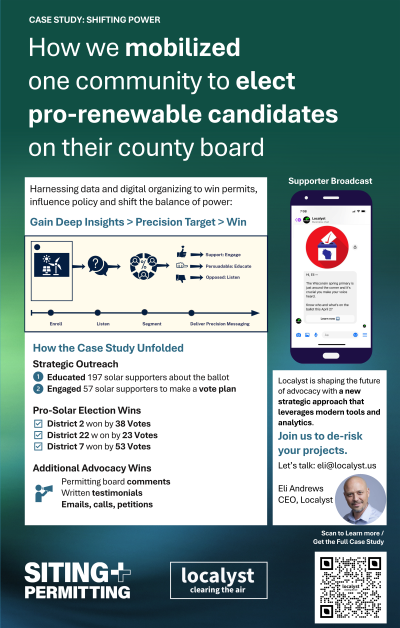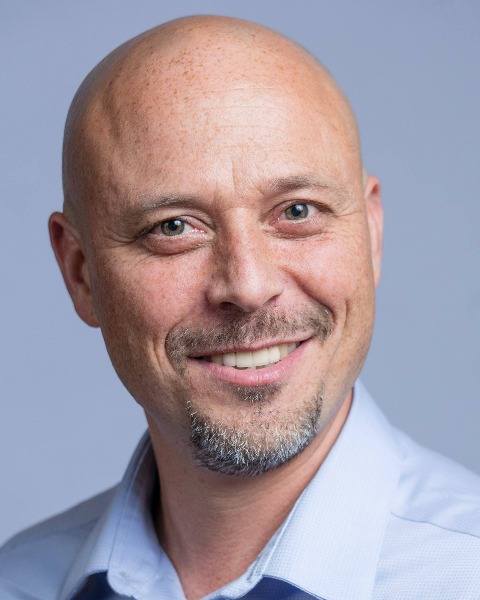A Surprising Case: How Data & Digital Organizing in Rural Wisconsin is Helping Permit Renewables


Eli Andrews
CEO
Localyst
Penn State University Smeal College of Business, Pennsylvania
Poster Presenter(s)
Wisconsin governor Tony Evers' Executive Order #38 dictates that all electricity consumed within Wisconsin is 100% carbon-free by 2050. Achieving that goal requires accelerating the pace that we’re getting steel in the ground for renewables. Unfortunately, two forces are slowing us down in Wisconsin: first, county officials who are opposed to renewable energy; and second, the dominance of negative comments logged with the Public Utility Commission (called the PSC in Wisconsin) during the public comment period for proposed renewable energy projects. Leveraging data analytics to identify and activate supporters of solar farms in rural Wisconsin, we discovered a means to address each of those problems. The data shows the approach that led to a 30% increase in positive formal comments on the docket for a proposed solar project in Rock county, Wisconsin (this study was not conducted on behalf of the developer, but rather was funded by nonprofit partners who share our mission to accelerate the transition to renewable energy in the U.S.). I will also share results from the civic engagement campaign that we ran to educate voters in Columbia county, Wisconsin about the candidates running for local office in April, 2024. We engaged 194 solar supporters in our Columbia county campaign, and three pro-solar candidates won by 53 votes or less, defeating one anti-solar incumbent and effectively shifting Columbia county to a pro-clean energy majority. The case studies to argue that while broad-stroke communications about renewable energy projects can backfire by activating the local opposition, surgically targeted push notifications delivered exclusively to supporters can drive meaningful local action. Finally, I will share our learnings and best practices from the field for how to leverage data analytics to identify and activate supporters anywhere in rural America to help move renewable energy projects over the finish line.
